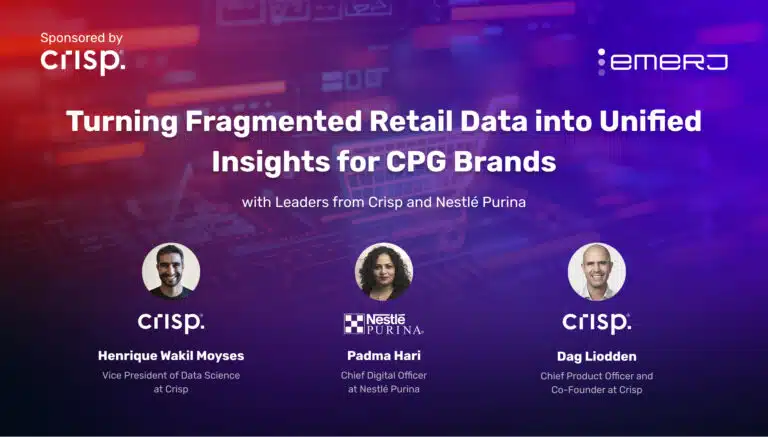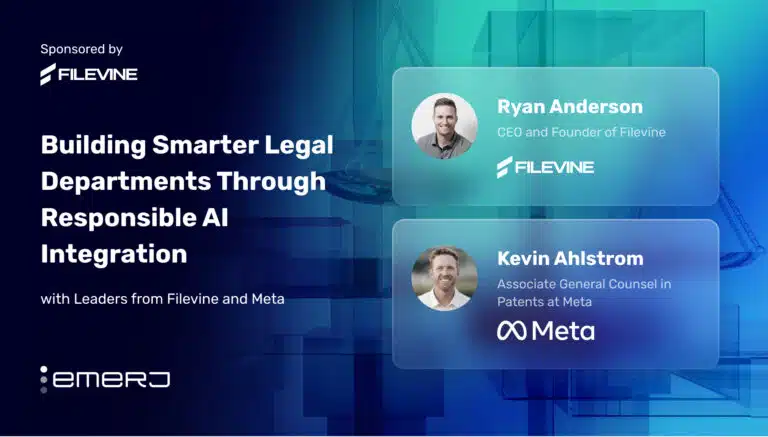Predictive analytics for marketing would have been adopted years ago – if only the compute power were more ubiquitous, the data were more accessible, and the software were easier to use. Now “predictive analytics” itself is almost a buzzword, after nearly 30 years of backward-looking marketing tracking.
Today, well over 30 years after the founding of Lotus Software, even medium-sized businesses are often still operating their marketing “scoreboards” in Google Sheets or One Drive… “throw it in a spreadsheet” still works.
But businesses with an eye on the future want to know more than just what happened in the past. “Scoreboards” (most analytics tools and tracking) don’t tell you what the score will be. Some of our recent “AI for marketing” articles have gained readership because more and more executives are searching for ways to look forward with their numbers, not just back. SAS defines the term well:
Predictive analytics is the use of data, statistical algorithms and machine learning techniques to identify the likelihood of future outcomes based on historical data. The goal is to go beyond knowing what has happened to providing a best assessment of what will happen in the future.
In this article, we’ll aim to highlight some of the most promising marketing applications of predictive analytics, and clarify the role of machine learning and AI in the advent of predictive analytics tools.
The executive summary-like article will aim to cover the following:
- Current applications of predictive analytics for marketing and advertising
- The role of data and machine learning
- Existing market research on predictive analytics
- Prominent vendors and service providers in predicitive analytics
- Related interviews and articles
The goal with this article isn’t to give you an in-depth look at all of the use cases and science behind the innovations in predictive analytics, but rather to give you a grounding in its fundamental use cases – along with a bit of insight as to how the technology works. We’ll begin with some modern applications worth noting:
Five Current Predictive Analytics Applications for Marketing
Though a full list (and sub-lists) might extrapolate 20 or more individual use cases, we’ve highlighted 5 current predictive analytics applications that marketers should be familiar with today:
1 – Predictive Modeling for Customer Behavior
Predicting customer behavior and preferences is the hallmark of companies like Amazon and eBay (see our eBay machine learning interview here), but the technology is becoming increasingly accessible and relevant for smaller companies as well.
Creating a complete catalog of predictive models would be an extensive and cumbersome process, but there are a number of relatively simple model types that apply well in the marketing domain. Silicon Valley-based predictive marketing company AgilOne identifies three primary classes of predictive models:
- Cluster models (segments) – Used for customer segmentation; algorithms segment target groups based on numerous variables, everything from demographics to average order total. Common cluster models include behavioral clustering, product based clustering (also called category based clustering), and brand-based clustering.
- Propensity models (predictions) – Used for giving “true” predictions about customer behavior. Common models include predictive lifetime value; likelihood of engagement; propensity to unsubscribe; propensity to convert; propensity to buy; and propensity to churn.
- Collaborative filtering (recommendations) – Used for recommending products, services, and advertisements to customers based on a variety of variables, including past buying behavior. Common models (like those used by Amazon and Netflix) include up-sell, cross-sell, and next-sell recommendations.
Regression analysis in its various forms is the primary tool that organizations use for predictive analytics. Defined in simple terms, an analyst performs a regression analysis to spot strength of correlations between specific customer variables with the purchase of a particular product; they can then use the “regression coefficients” (i.e. the degree to which each variable affects the purchase behavior) and create a score for likelihood of future purchases.
Outcomes for predictive modeling are, like so many predictive analytics approaches, highly dependent on proprietary data, but there are several common ways that this information can be transformed into results, as outlined in the next four applications.
One concrete example from Tableau’s case study file: Arby’s tracked and found an increase in sales at renovated store locations, resulting in 5 times more store remodels in the following year.
2 – Qualify and Prioritize Leads
A recent study published by Forrester identified three categories of B2B marketing use cases that reflect early predictive success and lay the foundation for more complex use of predictive marketing analytics:
- Predictive Scoring: Prioritizing known prospects, leads, and accounts based on their likelihood to take action.
- Identification Models: Identifying and acquiring prospects with attributes similar to existing customers.
- Automated Segmentation: Segmenting leads for personalized messaging.
All of the above concern qualifying and prioritizing leads, and doing this groundwork prepares teams to apply the strategies that follow. Sales staff who can prioritize leads most likely to buy (or specific next steps most likely to move the sale forward) will be in a better position to close more often.
It should be noted that while predictive marketing capabilities will become more and more accessible to startups and small businesses, these techniques require a high sales volume in order to build and train a predictive model adequately. While even small companies can drive billions of impressions or millions of clicks and low-ticket eCommerce product sales, data about face-to-face sales is harder to accumulate with smaller or newer companies. This potentially puts larger companies in favor of successfully yielding a return on investment from techniques that involve sales data.
3 – Bringing Right Product / Services to Market
Data visualization is a valuable tool that not only appeals to the eye, but can be used to inform, inspire and guide actions based on customer behavior (and other business information).
For example, a brick-and-mortar marketing team might use all the information available on customers to make data-based decisions about which products and services are best to bring to market. By using data visualization to shows which types of customers live in a store’s neighborhood, teams can hone in on important guiding questions: Do they buy more hard goods or soft? Is there an age-range density that shows what should be stocked? Does the desired product make-up change as you move towards or away from competitor locations?
This type of information can also be linked to overarching supply chain management strategies.
For readers interested in this topic specifically, we’ve written previously on two specific use cases of machine learning and data visualization in a business context.
4 – Targeting the Right Customers at Right Time with Right Content
Targeting the right customers at the right moment with the best offer links back to customer segmentation. This may be the most common marketing application for predictive analytics because its one of the “simplest” and most direct ways to optimize a marketing offer and see a quick turnaround on better ROI.
According to a study by the Aberdeen Group, predictive analytics users are twice as likely to identify high-value customers and market the right offer. Your data set matters, and best practices dictate using historical data on behavior of existing customers to segment and target, and using that same data to create personalized messages.
A range of predictive analytic models can be used in this application, including affinity analysis, response modeling, and churn analysis, all of which can, for example, tell you whether it’s a good idea to combine digital and print subscriptions or keep them separate, or help you determine content that should be charged a subscription fee versus content that should be given a one-time sales price or other structure.
Many vendors, like Salesforce, are offering a marketing cloud platform, through which marketing teams can build audience profiles by combining data from multiple avenues, from CRM to offline data. Feeding the system appropriate data and tracking behavior over time builds a behavioral model that allows teams to make data-based decisions in real-time over the long term.
5 – Driving Marketing Strategies Based on Predictive Analytics Insights
In addition to those outlined above, other drilled-down uses for predictive analytics in marketing include:
- Accessing internal structured data
- Accessing social media data
- Applying behavior scoring to customer data
Predictive analytics insights yield an effective tool to cope with “channel proliferation and changing buyer behavior”; all of the applications above could be used to determine whether a marketing campaign through social media will have a greater impact, or whether one through mobile is more appropriate for the target audience.
Text analysis and sentiment analysis applied to social media data is another example of capturing insights that can be used to help drive marketing campaigns and future product creation.
Why Now? The Role of Data and Machine Learning
While initial applications of predictive analytics can be said to be nearly as old as the field of machine learning itself, predictive analytics as a field (and certainly as a focus of venture capitalists) follows the strong interest in ML-based technologies following Dr. Geoffrey Hinton‘s famous victory in the 2012 ImageNet image recognition contest. Hinton and his research team were quickly hired from University of Toronto into Google, and the race to apply advanced statistical modeling to handling data (machine learning) began it’s hyperdrive push for popularity in the business world.
Similarly, because nearly any business that exists today operates so many of it’s functions in digital space (finance, marketing, sales, customer relationships, vendor data, hiring, etc…), data is now aggregate-able and accessible in ways that it never way before. Now even a small 2-person eCommerce operation with only $800,000 in annual revenues has more marketing data to manipulate and explore (organic search traffic, time-on-site, impressions, various PPC ad channels, customer lifetime value as tracked within a CRM, etc…) than a business many times it’s size just ten years ago. Millennials entering marketing professionals know no other world than the world of digital, quantifiable metrics and data. This information allows companies of all sizes to train models and leverage predictive analytics.
Machine learning would be even more of a rare “dark art” in business if it wasn’t for an entire ecosystem of vendors who are making predictive analytics easier to understand and apply in business, even without an advanced computer science degree.
Existing Market Research on Predictive Analytics for Marketing
Like machine learning, predictive analytics is getting a lot of attention. While predictive analytics has been kicking around in the world of business and marketing for longer than ML, it only appears to have been this year (2016) that teams using some form of marketing analytics platform are starting to outpace those who still choose to go without. Forrester published a study a few years ago outlining two big challenges that modern marketers’ face:
- Creating more personalized and relevant messages for increasingly selective buyers
- Creating customized marketing campaigns that engage a wider range of key decision-makers and influencers earlier in the buying process
The numbers are in, and predictive analytics appears to have the potential to double marketing success measures in customer engagement and targeted sales across B2B and B2C industries. Forrester’s study yielded three key findings:
- Predictive marketing analytics use correlates with better business results and metrics
- Predictive marketing analytics helps marketers play a leading role in their companies
- Predictive marketers use advanced strategies to deliver greater impact across the customer life cycle
(Note: The Forrester study – while reputable – was conducted in conjunction with predictive marketing vendor Everstring, and can be found on the Everstring resources page, but requires opt-in for access. An informed reader will seek additional sources for case studies and information on this topic.)
Vendors and Service Providers
We’ve also included some vendors in the predictive analytics space (the numbers are climbing and this is by no means an inclusive list) to give readers an idea of related platforms and services being offered:
In a space as competitive (and potentially “hype-ey”) as predictive analytics, we’re likely to see vendors in the future niching down their offerings to specific marketing domains, such as eCommerce, enterprise sales, or some other such unique focus area. For example, vendor company Optimove (listed above) has “angled” itself around understanding and improving revenue and engagement from a company’s existing customer base.
Similar to other machine learning domains (such as healthcare, finance, etc…), startups will become more sophisticated in articulating value propositions. Some of these companies will also build more and more robust and powerful technologies to actually deliver on those value propositions (which often is not the case in a nascent field where many founders themselves are just figuring out how the technology can be successfully applied in industry).
Related Emerj Interviews and Articles:
If you’re interested in how predictive analytics might play a role in marketing, you might also enjoy this selection of related articles from Emerj:
- Machine Learning Marketing – Expert Consensus of 51 Executives and Startups
- The State of Machine Learning and Predictive Analytics for Small Business
- Artificial Intelligence in Marketing and Advertising – 5 Examples of Real Traction
- How Machine Learning Shapes Your eBay Experience (Zoher Karu, VP, Chief Data Officer at eBay)
If you enjoyed this article about machine learning in marketing, you might also enjoy our previous articles about machine learning in robotics, AI in the internet of things, and machine learning in finance.
Image credit: Aviyos





















